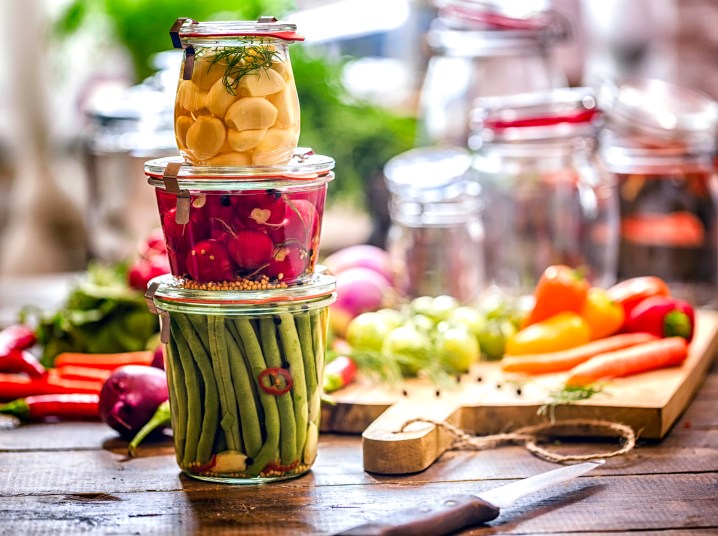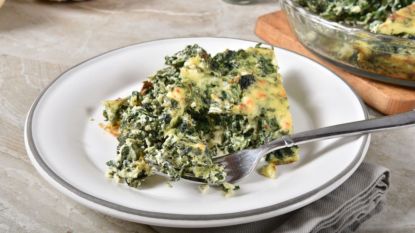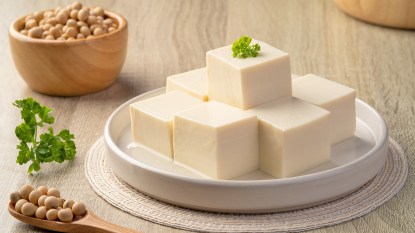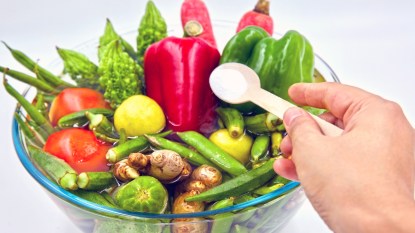Fermenting Vegetables at Home Is the Affordable, Easy Way to Slim Down and Stay Healthy for Good

Move over, canning! Women from coast to coast are trading the old-school preservation method for an easier technique that makes veggies even more nutritious and delicious. Find out how it’s helping them revitalize their health — and how you can reap the benefits, too!
For many of us, canned veggies conjure up images of the bland, mushy tomatoes, corn, and green beans that our mother or grandmother lovingly boiled over a steaming stovetop to last the family through the cold winter months. This preservation technique fell out of fashion as frozen veggies became more popular and fears of botulism grew — but now a growing chorus is giving us new reason to break out our canning jars: Women who have taken up the process of fermenting vegetables have found it’s easier, tastier, and safer than the old canning method — plus, it comes with a bevy of health perks!
What makes fermented veggies so popular? For starters, it’s mostly a hands-off process that requires no special equipment and minimal prep time — just select your vegetables, submerge them in salty water, seal them up, and wait.
“It’s inexpensive, and it’s so easy that literally anyone can do it,” says Tess Masters, a 45-year-old from California. And Jami Boys, a 55-year-old wife and mom from Oregon, agrees, “Honestly, this isn’t just another chore on your to-do list. You just quickly mix it up together, put it in a jar, and forget about it until it’s ready.”
The Many Health Benefits of Fermented Foods
As the vegetables sit in their salty brine, lactobacillus bacteria and other flora that are naturally present on vegetables consume the starches in those vegetables and convert them into carbon dioxide and lactic acid. “Hundreds of types of bacteria are involved in the fermentation process, and each one adds to the flavor profile,” notes Kirsten Shockey, a homesteader from Southern Oregon. Over time, the CO2 evaporates away, leaving behind the two lactic acids (which gives fermented veggies a delicious, tart, sour flavor) and a ton of beneficial bacteria.
This infusion of beneficial bacteria appealed to Jami. “I was constantly hearing probiotics this, and probiotics that. But supplements are so expensive,” she notes. “As an alternative, I decided to look into probiotic-rich foods like fermented vegetables — and what I found opened up a whole world of well-being for myself and my family.”
And no wonder! Homemade fermented veggies cost pennies on the dollar compared with probiotic supplements and even store-bought yogurts — and they boast a wider variety of living bacteria. That’s a plus since these good bugs have been shown to rev metabolism and double weight-loss success, as well as dial up immunity by 20 percent, ease joint pain by 67 percent, decrease bloat by 47 percent, and reduce blue moods by 50 percent.
“Fermentation can also add nutritional value,” notes integrative physician Amy Myers, MD. “The bacteria produce B vitamins, omega-3 fatty acids, and digestive enzymes not present before fermentation.”
During fermentation, good bacteria also helps predigest all the vitamins and nutrients in the vegetables themselves, making them more bioavailable to the body. The health payoff of this nutrient boost can be huge. “Fermented foods were a serious game changer for me,” says Tess Masters, who credits the veggies with curing her Epstein-Barr symptoms. “When I eat them, I have more energy, I hardly ever get sick, and I feel like my best self.”
As women start incorporating fermented veggies into their diet, they often hit upon another slimming perk. “This will make you start craving the foods that help you stay healthy,” says Donna Schwenk, the 58-year-old author of Cultured Food in a Jar ($13.38, Amazon). “I kid you not, you will start craving healthy foods, even if you never have before.”
Dr. Myers explains that increasing your intake of beneficial bacteria works to crowd out the bad-acting microbes that can drive up cravings for sweets and other carbs. “Snacking on pickles absolutely helped me stick to my healthy eating habits and lose weight,” shares Thea Dillard, a 36-year-old teacher from Mississippi, who credits the tart treat with helping her lose 238 pounds. “They made a big difference in my health, weight, and energy levels.”
The best part? Getting the benefits is downright delicious. “Homemade fermented vegetables have nothing to do with that yucky stuff most people are familiar with. They have a bright flavor that almost everyone loves — even people who swear they don’t like fermented vegetables! If we can get them to try our homemade recipes, they almost always change their mind,” asserts Kirsten Shockey, who’s been fermenting her own veggies for 19 years and runs the website Ferment.works. “True canning, which requires a lot of heat and pressure, makes foods limp. Fermented veggies, on the other hand, stay crisp.” This makes them a great replacement for crunchy snacks, a tart addition to sandwiches, or a punchy topping for soup or salads.
You also don’t have to eat a lot of fermented veggies to see results. “I eat about half a cup every day before meals to aid digestion,” says Donna, who also uses the salty brine as a supercharged tonic. “I find the brine is just as powerful as the vegetables themselves. In my experience, eating just one tablespoon can ease food poisoning in about 20 minutes,” she notes. “It’s also delicious in a salad dressing or marinade as a substitute for vinegar. You can also add a bit to guacamole to retain that beautiful green color.”
Once women start fermenting, they never look back. “Time and again, I reach for these vegetables,” Donna says. “They make me feel good throughout the day, and if I don’t eat them for two or three days, I notice.” Tess agrees, adding, “I believe cultured vegetables are the number one way to boost overall health and immunity. It’s one of the easiest, tastiest things you can do to improve wellness.”
How to Ferment Vegetables
“Fermentation is a simple equation: Salt + Vegetables + Time = Yum,” says Kirsten Shockey, coauthor of Fermented Vegetables ($19.56, Amazon).
To try it yourself, start with a quart-size glass jar and enough veggies to fill the jar with 1⁄2 inch of space at the top; cauliflower, carrots, and asparagus are all great picks. Pack them in the jar, then add 1 to 2 tablespoons of kosher or sea salt (to keep unwanted bacteria and mold away), and enough water to cover the veggies. Seal the jar, shake to distribute the salt, and place on the counter at room temperature for at least three days. The longer the veggies ferment, the tangier they’ll get. Once they taste good, move the jar to the refrigerator.
If the veggies rise above the water, push them back down (or add water) to protect against the growth of bad bacteria. Beyond that, fermenting is foolproof. “It’s much safer than canning because the acid level ensures nothing bad can live in it,” Shockey says. In fact, USDA microbiologists report that there has never been a case of food poisoning from properly fermented vegetables. “Fermentation is very forgiving. If it’s wrong, all five senses will tell you not to put it in your mouth.”
Still nervous? You can get the benefits from fermented foods in the refrigerated section of the supermarket. Just make sure the ingredient list doesn’t include vinegar (which kills the beneficial bacteria). A pick the women FIRST spoke to rave about: Bubbies Pickles ($21 for 33 oz., Amazon).
4 Delicious Fermented Vegetable Recipes
Women FIRST spoke with have fermented everything from carrots, celery, and green beans to asparagus, beets, and even herbs. Try one of these recipes to get started.
Jami’s Corn Relish
- Combine 2 cups of corn, 1 small diced onion, half a diced sweet red pepper, 2 small cloves of garlic, and 1 Tbsp. of sea salt.
- Pack veggies tightly into a clean, 1-quart Mason jar. Add water until veggies are completely submerged.
- Seal and store at room temperature for five days.
Donna’s Carrot Cake in a Jar
- Combine 2 cups of shredded carrots, 2 shredded apples, 4 chopped dates, 1⁄8 cup of chopped walnuts, 1⁄8 tsp. of nutmeg, 1⁄8 tsp. of cloves, 1⁄2 tsp. of cinnamon, and 1⁄2 tsp. of sea salt.
- Pack tightly in a clean, 1-quart Mason jar. Add water until veggies are submerged.
- Seal and store at room temperature for three days.
Donna’s Dill Pickles
- Tightly pack 1 lb. of pickling cucumbers in a clean, 1-quart Mason jar with 3⁄4 Tbsp. of sea salt, 1 clove of chopped garlic, 1 Tbsp. of whole dill seeds, 1⁄2 Tbsp. of coriander seeds, 1 ⁄4 tsp. of peppercorns, and 1 ⁄4 tsp. of dill weed.
- Add water until veggies are submerged.
- Seal and store at room temperature for three days.
Tess’s Beets and Cabbage
- Shred and combine 1 head of cabbage, 3 beets, half a red onion, and half an apple.
- Add 1 1⁄4 Tbsp. of natural sea salt, 1 1⁄2 Tbsp. of minced ginger, 2 Tbsp. of chopped garlic, 3 Tbsp. of lemon juice, and 1⁄2 tsp. of lemon zest.
- Pack into a clean, 1-quart Mason jar. Add water until veggies are completely submerged.
- Seal and store at room temperature for seven days, opening to release CO2 after four days.
Success Secrets From Fermenting Pros
Keep veggies under the brine with ease.
As long as veggies are submerged in brine, bad bacteria can’t grow on the surface. That’s why Kirsten Shockey suggests filling a small zip-top bag with rice and placing at the top of jars to weigh down the veggies.
Prevent messy leaks with special lids.
CO2 buildup causes brine to overflow. That’s why Jami Boys likes Easy Fermenter Wide Mouth Lids ($25 for 3, Amazon.com), which release CO2 with the push of a button.
Turn veggie prep into a party.
A processor makes quick work of shredding veggies, says Tess Masters, who likes to throw fermenting prep parties with friends: “We have a blast shredding and filling our jars.”
Fermentation Success Stories
“This changed my life!”
As a teenager, Tess was diagnosed with the Epstein-Barr virus. “I didn’t have any horrible symptoms, but I did experience extreme lethargy,” she recalls. “I was tired all the time, and I had uncomfortable digestive issues.” Tess’s father took her to see a naturopathic doctor, who recommended adding fermented vegetables to her diet. “This was a serious game changer for me,” she raves. “My entire life changed. I had more energy, I felt better all the time and I hardly ever got sick… so I’ve just never looked back. I’ve been making my own sauerkraut for more than 30 years now, and I think cultured vegetables are the number one way to boost your immunity.”
“I cured my gas and bloat.”
Painful gas, bloat, and irregular bowel movements started to plague Jami in 2016. “It was uncomfortable to sit for long periods of time, and it became really frustrating. I wondered if it would ever end,” recalls Jami, who blogs at AnOregonCottage.com. She started talking with doctors and reading books about health, and discovered that sometimes the body’s digestion simply slows with age. So she experimented with probiotics and eventually, fermented foods — and that’s when she experienced relief. “About two months after I started eating the fermented foods, I realized, Oh! I haven’t had painful gas in a while! This really works!”
“I slimmed to my happy weight.”
As a school teacher, Thea struggled to stand in front of the classroom all day. “This isn’t working at my current weight,” she remembers thinking. I need energy for my kids — the ones here and the ones at home. That’s when Thea started fermenting and enjoying her own pickles. “They kept my appetite in check,” she shares. “And over the school year, the weight just kind of fell off my frame.” Now Thea has more energy than she knows what to do with — and her kids (at home and at school) have a hard time keeping up with her!
This story originally appeared in the August 13, 2018 issue of FIRST for Women magazine.
More From FIRST
What Happens If You Accidentally Eat Mold?
What Exactly Is a Keto Diet Anyway? We’re Breaking Down the Basics
Halle Berry Credits Bone Broth Recipe for Her Ever-Youthful Look













